Guppy or Endler Guppies: One can say that this fish, which we want to introduce to you today, is probably the most well-known in the freshwater aquarium is. Not just because of its simple breeding, but above all because of its appearance. The guppy or Endler guppy can be found in almost all aquariums and always looks different. Especially the many cultivated forms on this ornamental fish in the aquarium so special. You can find out everything there is to know about it in our Characteristics to the guppy.
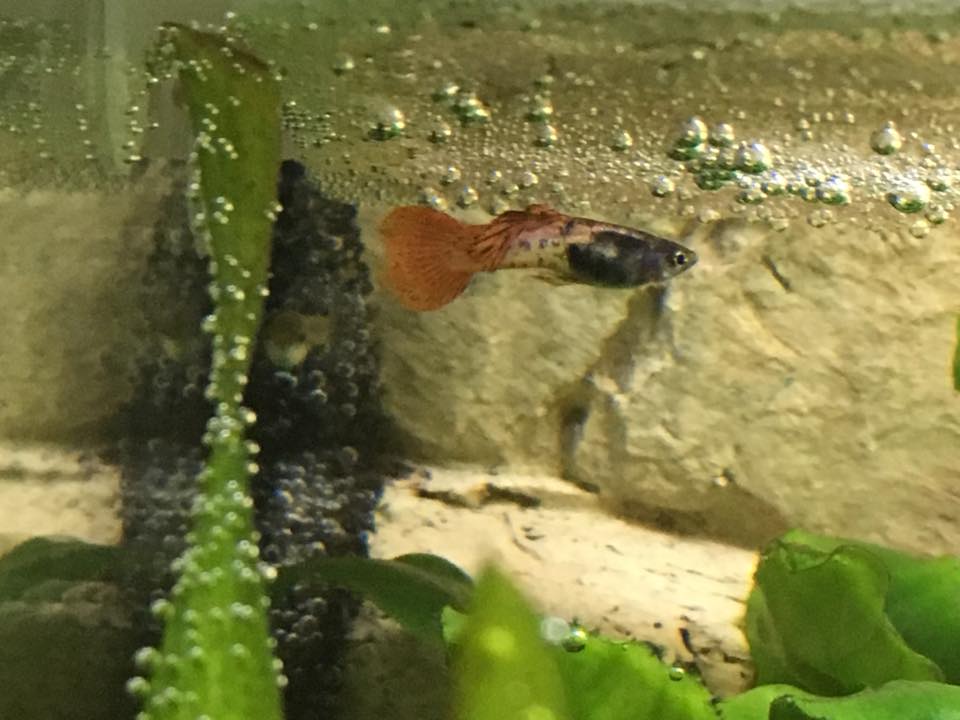
Guppy (Poecilia reticulata) and Endler's guppy (Poecilia wingei) what's the difference?
First, let's look at the different designations of the guppies, because again and again one speaks of normal guppies and also of the Endlers guppies. Both types were very often mixed and bred in mixtures. Yet they are different ornamental fish and species and differ primarily in their size. Endler guppies do not grow as large as normal guppies. Just like normal guppies, Endler guppies come in different colors and shapes. In addition, the Endler guppies are usually offered as wild catches. But where do the species come from, because guppies and endlers differ there too.
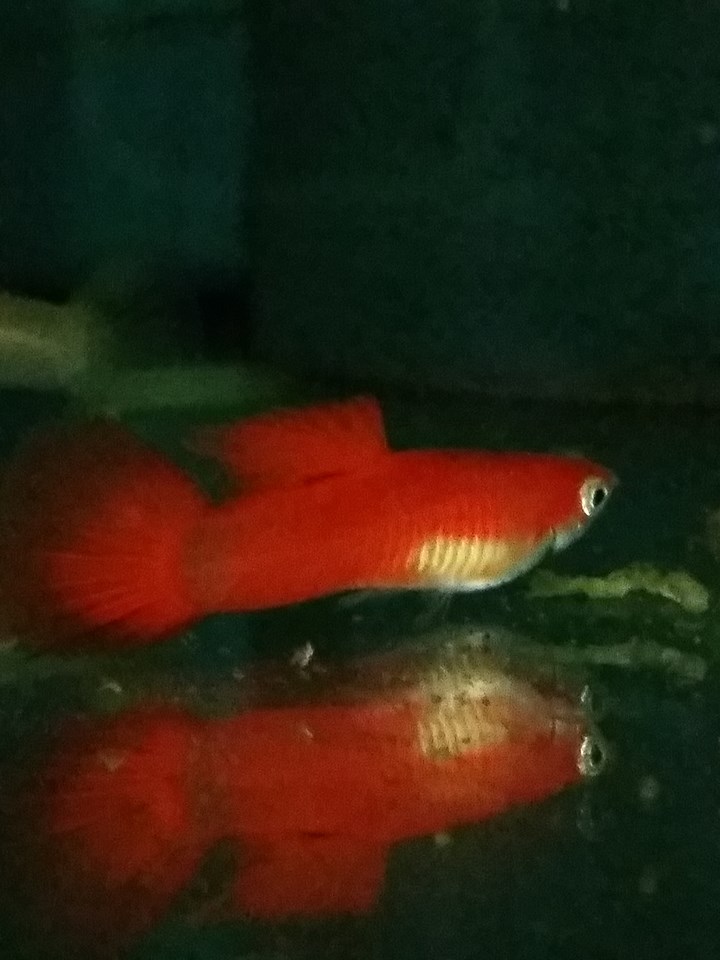
Origin and distribution of the guppy (Poecilia reticulata) and Endler's guppy (Poecilia wingei)
The normal guppy is found in the northern South America and in parts of Caribbean again. It is also available in the range from Venezuela. However, the guppy was also introduced worldwide to control mosquitoes. However, this is not a natural habitat. It has also spread to certain areas through the release of aquarists and is now finding its habitat there.
The distribution area and the original origin of the Endler Guppy look a little different. It comes exclusively from northern Venezuela and occurs there in two separate areas. All other localities are assigned to the normal guppy. Because of this, the Endler Guppy is usually only available as a wildcat and is therefore much more demanding than the normal Guppy.
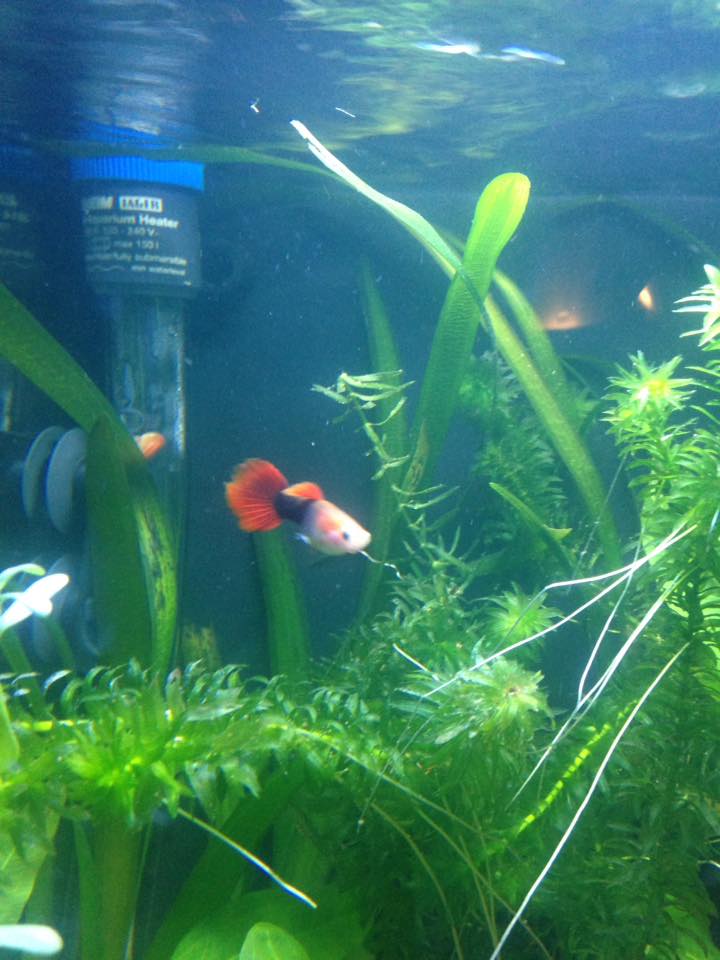
Appearance and characteristics of the guppy (Poecilia reticulata) and Endler's guppy (Poecilia wingei)
The guppies belong to the group of viviparous toothcarps, which says a lot about reproduction. They got their appearance from the toothcarps. The wide mouth and the shape are typical. As you can see in the pictures, the guppy comes in a wide variety of colors and shapes. Above all, the caudal fins of the males are changed and shaped accordingly through breeding today.
Males are also the much more beautiful animals here. The females are usually larger, but have no special caudal fins and the colors are usually paler and colorless. The situation is similar with the Endler guppies. However, these species do not grow that large. Often there is even talk of keeping them in the nano aquarium, although we would advise against it. Guppies should not be kept under 60 liters. If only in the breeding area.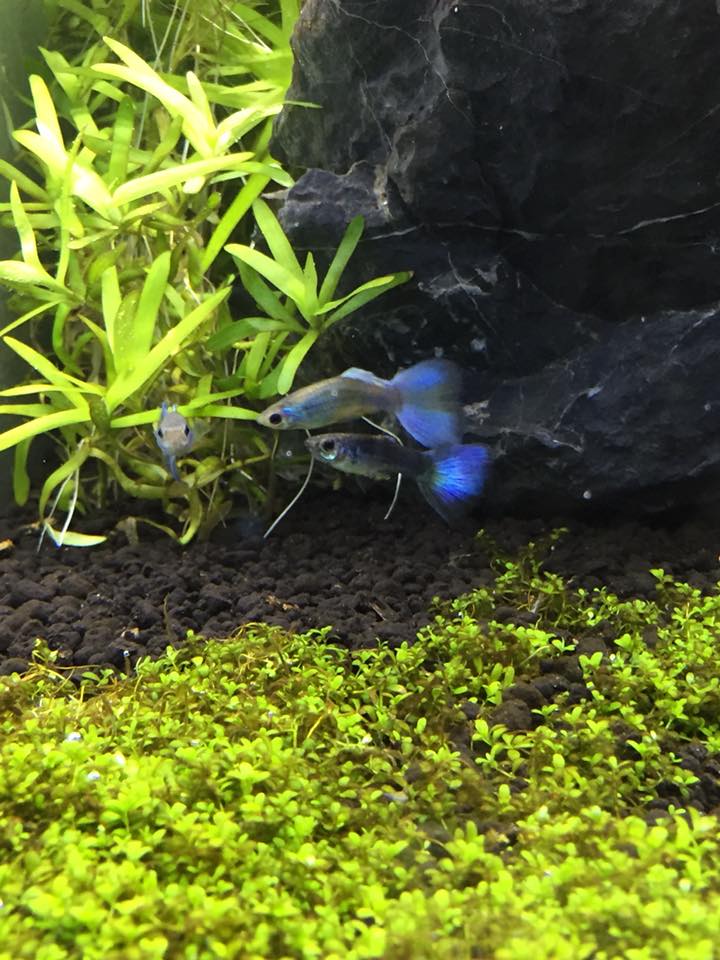
Due to their special appearance and the many variants and facets, there are awards and competitions worldwide.
If you have problems distinguishing a male and a female, this can also happen on the genopodium. There you can see quite well what the male is. In addition, one finds a pregnancy spot in females. This also indicates when the female is pregnant.
The caudal fins are also divided into large fins and small fins. Among these species you still hear designations such as double sword, fan tail, flag tail, spade tail or spear tail. All of these designations are aimed at the shape of the fins.
Housing conditions, socialization and water values for the guppy (Poecilia reticulata) and Endler's guppy (Poecilia wingei)
Now we come to the keeping conditions. Here you can quickly see why the guppies are very often popular with beginners. On the one hand, this is due to the fact that they are relatively undemanding and, on the other hand, everyone likes to have babies in their aquarium.
When it comes to temperature, they tolerate a fairly wide range from 20 to almost 30 degrees.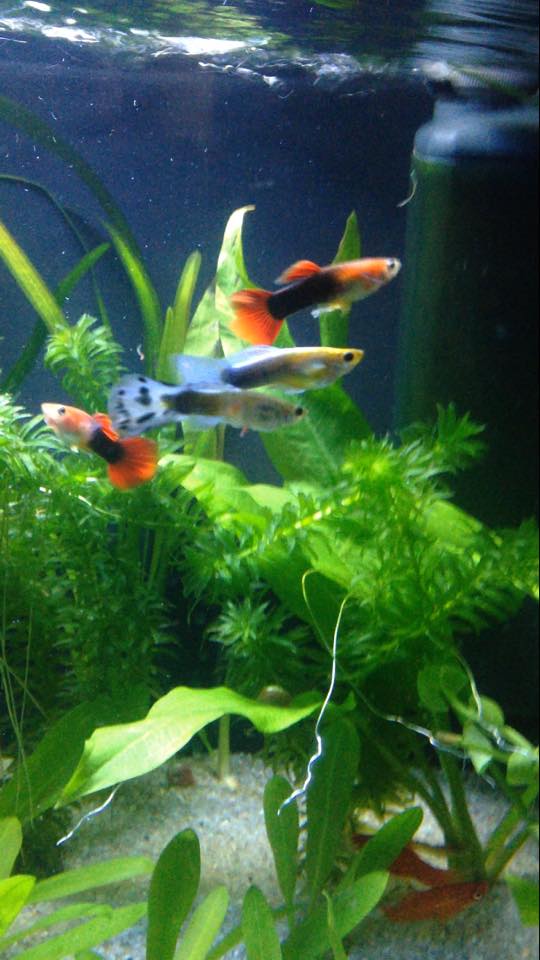
The requirements for the PH value are not particularly special either. Values from acidic water with a PH value of 6 to alkaline 8,5 are no problem. The hardness is also not a problem in our latitudes. Up to 25 - 30° dGH are possible here. Thus, the carbonate hardness is not a problem either.
There are different opinions on the size of the pool. We are of the opinion that you shouldn't keep Endler guppies under 60 cm and certainly not normal guppies. So your aquarium should have an edge length of at least 60 cm. Let's summarize the most important values.
Profile of the guppy
- breeding easy
- Pool size from 60cm / 60 liters
- PH value 6 - 8,5
- Total hardness Gh up to 30° dH
- Temperature 20 -28 degrees
- Size of guppy up to 3-6 cm
- Age of the guppy 2-4 years
- Special features: Many mixed forms from breeding / mixtures between Endler and normal guppies
Of course, guppies aren't bottom dwellers like that catfish, but nevertheless guppies can be found everywhere. Be it in the middle or in the upper water area and even on the bottom they look for you Feed.
They should be kept in groups of at least 6 animals. There should also be a balance between males and females. It's always best to buy a pair. However, if you do not want to have offspring, you should avoid this as much as possible.
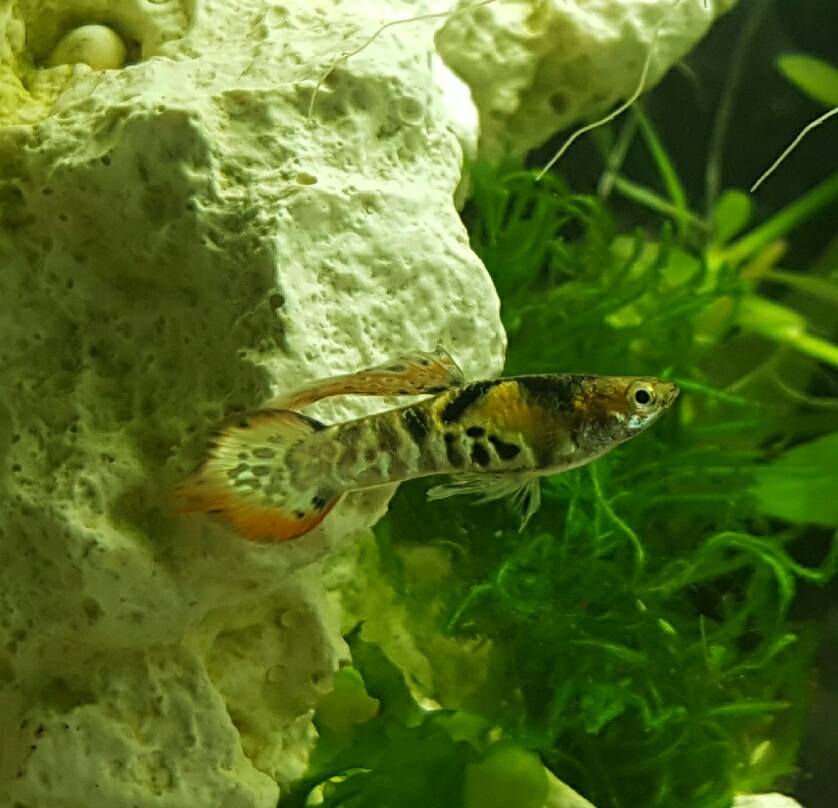
Guppies also love good hiding places such as dense plantings and floating plants, because these also offer enough protection for the young animals. In addition, caves are also welcome. When it comes to the water flow, you should make sure that there are areas in the aquarium that tend to have less water movement. Guppies like this.
The socialization of the guppies is not a problem. They are extremely peaceful and can also get along well with other fish. Their swimming behavior is also not particularly hectic or special.
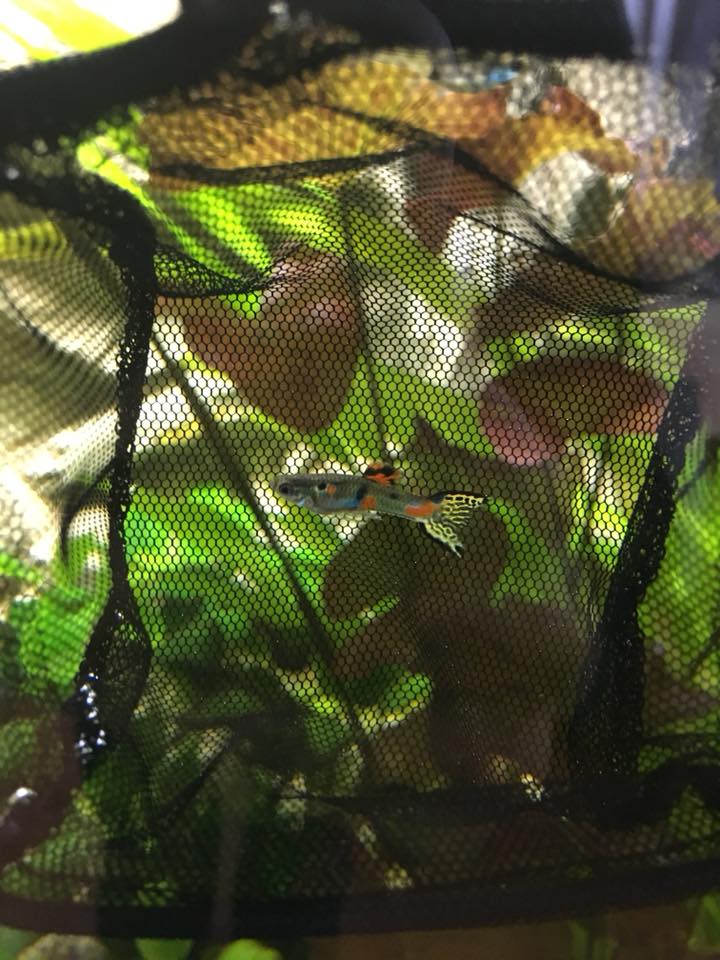
What do the guppy (Poecilia reticulata) and Endler's guppy (Poecilia wingei) eat
Here, too, there are few requirements. Basically they are omnivores. Not only do they love any kind of flake food, they also like to eat live food such as mosquito larvae of all kinds. You can also give them plant-based food. It is especially important if you want to breed guppies that you feed them a balanced diet. This is reflected very quickly in the rich colors. You should also make sure that the food is still durable and has a good quality.
Juveniles also like to eat brine shrimp and microworms. Certain rearing food can of course also be used. Dust food is available in many different varieties and is often used in rearing.
Breeding Guppy (Poecilia reticulata) and Endler's Guppy (Poecilia wingei)
Now let's get to breeding of guppies which presents no major difficulty. It only becomes difficult if you want to breed specific shapes and colors. This can be a real challenge, especially with Endler guppies. Why? You will understand that after the following lines.
As is well known, guppies belong to the group of viviparous toothcarps and therefore give birth to their young alive. Usually these are about 30 pieces. A female guppy can give birth every 30-40 days, which can quickly result in large numbers of fish. In a community aquarium, however, there is usually no need to be afraid, because the young are quickly eaten by other fish. The parents of the young guppies also eat their own young. The female follows the young very quickly. If you want to breed them in a targeted manner, you have to separate the animals very quickly and ideally transfer them to a breeding tank. In addition, it is also important to be careful when it comes to inbreeding, because after 3 months the young animals are sexually mature and can therefore give birth to young again.
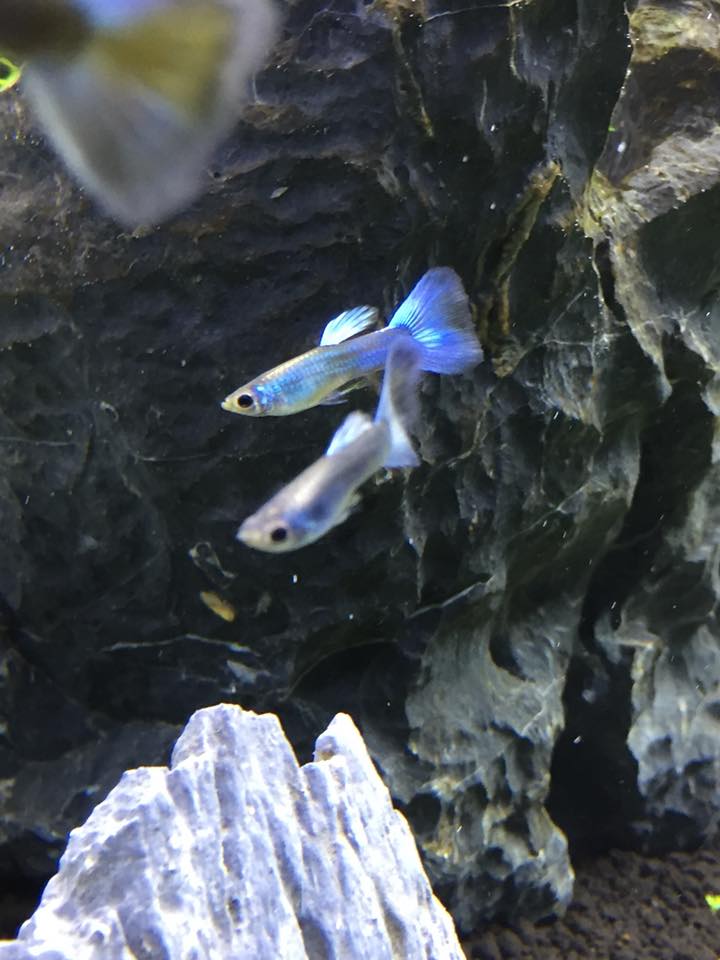
Finally, a video from a guppy breeding farm. There you can get an insight into how guppies are bred on a large scale and then imported to us in Germany.
Thanks also to the many pictures of the Facebook group https://www.facebook.com/groups/AquarienDeutschland/permalink/1445814845544600/



